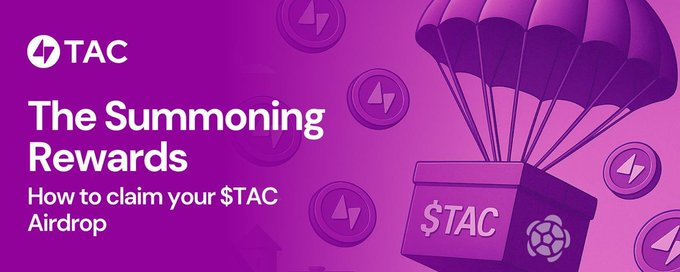TAC Protocol: The DeFi Infrastructure Revolution in the Telegram Ecosystem
TAC Protocol is an EVM‑compatible blockchain solution designed for Telegram’s massive user base, aiming to solve the core friction between 1.1 billion monthly active users and decentralized finance. Traditional Ethereum dApps fail to reach Telegram users—wallet install rates are below 15%; asset interoperability between TON and EVM chains requires complex bridges that cost $8‑15 per transaction; TON’s TVL is just $320 million, indicating severe fragmentation of liquidity. Using its self‑developed TON Adapter module and unified liquidity protocol, TAC turns Telegram into an efficient Web3 gateway—users can access DeFi services directly in chat without installing separate wallets.

This Token Insights article provides an in-depth analysis of how TAC Protocol leverages innovative technology to bridge the Telegram ecosystem with the DeFi world, enabling a seamless crypto experience for a billion users.
Three‑Layer Technical Architecture that Solves Cross‑Chain Challenges
EVM Compatibility Layer
Developers can migrate Solidity contracts seamlessly. Gas costs are 92% lower than Ethereum—only $0.02 per transaction. With integrated Ankr RPC node services, the network can process over 2,000 TPS, fitting Telegram’s high‑frequency social context perfectly.
TON Adapter Module
Enables true bidirectional asset flows. Transfers from TON to TAC Protocol use smart‑contract escrow with zero‑knowledge proofs; reverse transfers use threshold‑signature multisig release, maintaining cross‑chain latency under 20 minutes. The module was audited three times by Halborn, achieving 100% mitigation of critical vulnerabilities, creating a secure bridge between ecosystems.
Layered Cross‑Chain Network
The official bridge supports TON/USDT/tacLST assets with 0.1% fee; the LayerZero bridge handles ETH, cbBTC, wETH with <5-minute latency; the AggLayer bridge supports Polygon assets, balancing efficiency and cost. Developers can consult JuCoin’s EVM guides for seamless migration.
Tokenomics and Value Capture
TAC has a fixed supply of 4.8 billion tokens, with 4.8% allocated to liquidity incentives—3.3% and 1.5% were distributed via the “Summoning” campaign. Token use cases include:
-
Gas fees—expected to consume 35% of circulating supply.
-
Governance—holders vote on cross-chain rate settings and dApp whitelists.
-
gForce Vault—offers 20% APY for accelerated staking, attracting long-term holders. Validator staking yields range from 8–20%, enabling sustainable network security incentives.
Ecosystem Progress and Liquidity Innovation
The 2025 Summoning campaign attracted over 4,000 addresses and locked in $79 billion TVL. Institutional custodians like Cobo and Fireblocks make up 68% of TVL; over 350 retail addresses hold more than $50,000 each. Leading DeFi protocols—Curve, Morpho—have fully deployed on TAC Protocol Protocol, offering users a triple income stream: base trading fees (0.05–0.3%), TAC Protocol incentives, and native token rewards, yielding 40‑65% APY.
The tacLSTs mechanism closes the value loop: users deposit BTC/ETH to generate tacBTC/tacETH, bridge them to TAC, provide liquidity on protocols like Curve, and the collected fees and incentives flow back to holders. In a pilot in Kenya’s Kibera, 37% of users first encountered DeFi via this mechanism.
User Transition and Reward Path
Summoning had two phases:
-
Phase 1: April 1–June 5, with 3.3% token rewards unlocked on July 15.
-
Phase 2: June 6–July 16, distributing 1.5% tokens, linearly vested until August 30.
Users connect wallets via Merkl and receive automatic 0.1 TAC gas stipend airdrops.
Wallet compatibility includes:
-
Metamask, Rabby—via ChainID 239 custom network.
-
SafeWallet users use Protofire migration tools.
Participants can stake WTAC in gForce Vault for 20% APY locked for three months, or provide liquidity on Curve.
Challenges and Growth Opportunities
User education is a bottleneck—only 12% of Telegram users understand DeFi—requiring over $5 million to build AR educational tools. Regulatory uncertainty also looms—U.S. SEC might classify TAC as a security and restrict access. Meanwhile growth catalysts are emerging: TON’s ecosystem value surged 320% in 2025, on‑chain transaction volume grew 45% QoQ; gForce Vault’s high yield may attract $100 million in stablecoins; Binance is reviewing TAC futures listing.
When blockchain technology retreats behind Telegram chat interfaces and emerging‑market users make invisible on‑chain transactions for the first time, real Web3 adoption begins. TAC Protocol is a revolutionary restructuring of user experience—its success will prove whether simplified interaction can truly bridge DeFi to a billion users.




